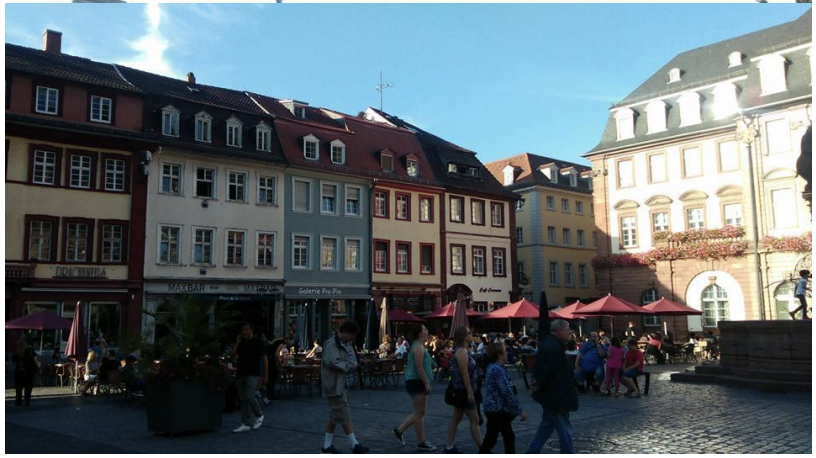The Buildings & The Mystery

THE BUILDINGS
The two Harley buildings were built of uncoursed Charnwood stone with dressed stone quoins. The Widows house, variously described as ‘almshouses’ or ‘hospital’, is aligned at 90 degrees to the road, being the slightly plainer of the two. The Census of 1841 included the widows for the first time and the census enumerator used the local name ‘The Residence’, the name it still bears today.
The description quoted in the Charity Commissioners report of three room vertical units “one on the ground floor, and another above, with an attic” fits the odd shaped building depicted in an engraving in Nichol’s ‘History and Antiquities

of Leicestershire’ (1802), i.e. a two storey building plus attic. If that picture was accurate then the roof has since been raised by some five feet to create the present three floors proper. This was probably done at the same time that the windows were replaced with cast iron ‘diamond pane’ frames. The positions of the two exterior doors were also slightly altered, and it seems likely that originally there were matching exterior doors on the East side, opening on to what was later the Rectory garden. Cast iron fronts ‘modernised’ the stone fireplaces and extra chimneys were constructed.
The Commissioners report states that the buildings were in very good condition, a considerable sum having been expended on them of late years”, perhaps indicative of major works. The Ordnance Survey map of 1883, scale: 25 inches to one mile, clearly shows The Residence’ as being divided into two dwellings, the format it retained for the rest of it’s ‘almshouses’ life. The schoolroom and ‘Harley House (schoolmaster’s house) face the road and have some classical decoration. The distinctive mullioned windows that flank the school room entrance, and the house extension to the rear, probably date from the same period as ‘The Residence’ alterations. The study is said to have fine oak panelling, but age is unknown. The School Room is used as the Village Hall.
THE MYSTERY
Finally, a bit of a mystery.
Three ‘Coats of Arms’ incorporating the ‘Harley shield’ (plain background with ‘Bend cottised t – a broad stripe) are displayed on the buildings. The arms in a small relief on The ‘Residence’ is with a ‘Beacon Tower’ as a crest; the same design is depicted in a small stained glass window over the door of ‘Harley House’; the large arms relief displayed over the school room door has lost it’s crest. Nichol’s book states that the school room arms are Thomas Harley’s – arms which have a Lion ‘s Head crest, see illustration below. Two Harley crests? The date of the school room arms, 1716, provides a clue. The ‘Beacon Tower’ version may be those of Francis Harley. Francis had laboured for thirteen years to bring his uncle’s charity to fruition and may well have viewed the result as a Harley family project. Thomas had donated the means to the funds after his death, but it was the living who had done, and would continue to do, all the work. It would be understandable if Francis chose to display the Arms of his grandfather, and Thomas’ father, Francis Harley. Francis, the nephew, finally died in 1715, aged seventy five years, having been a senior trustee and associated with the Charity for forty five years. Shortly after, Mary’s husband, John Bainbrigge, erected the over large and decorative Thomas Harley Arms relief and inscription panel that dominates the school room frontage. He died the next year. Why did he feel the need after forty five years, to make such a public, and no doubt expensive, statement? Perhaps as a gesture to Mary, restating her father’s generosity and ‘reclaiming the Charity in his name. Or simply taking the opportunity to be named and associated with it in a permanent manner – after all, the inscription has survived.
But, if the last suggestion was accurate then he has failed miserably – foiled by the weather and careless workmanship.

The inscription, now displayed inside the school room for protection, was carved on rather soft slate. Due to weathering the inscription has had to be re-cut on more than one occasion during its two hundred and seventy nine years life. This has led to errors of transcription – and has created a myth.
The Latin inscription today, born out by a framed translation, states that “John Bambridge Armit, the husband of his only daughter, raised this graven stone – 1716′. The ‘I’ and ‘N’ has been merged, making ‘BAIN’ into ‘BAM’. It is a matter of record, including a plaque in nearby St. Mary’s church, that Mary Harley married BAINBRIGGE, so it’s a strange mistake to make. Even stranger is that the word ‘ARMIGER (meaning entitled to bear heraldic arms) has become ‘ARMIT, so ‘John Bainbrigget, real person, has turned into “John Bambrigge Armit tt, fictional person.
Brian Brooks
Sources: ‘History and Antiquities of
Leicestershire’; Leicestershire County
Record Office, 1837 Charity
Commissioners Report on Harley’s Charity; ‘Chronicle of Britain’; ‘The Life & Times of Charles Il’, Camden ‘s ‘Britannia’ ‘Victoria County History’ and ‘The I-Spy Book of-Widm.us-‘.
Get In Touch With Us Today
Menu
Menu
Quick links
Call us
0116 222 2200
Mail Us
sue.stevenson@charity-link.org
Visit Us
20a Millstone Lane Leicester LE1 5JN